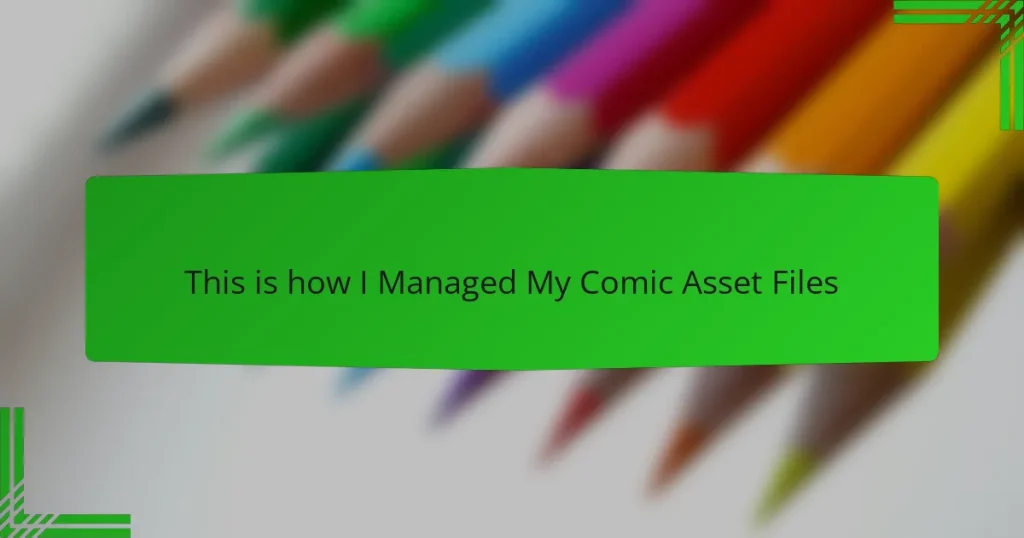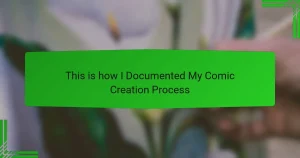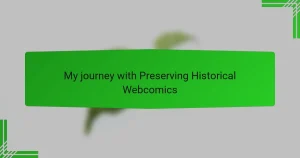Key takeaways
- Organizing comic archives enhances creativity and efficiency, allowing creators to focus on storytelling rather than searching for assets.
- Implementing version control, consistent naming conventions, and metadata improves file management and retrieval.
- Regular reviews and backups of files are crucial to prevent loss and inspire new creative ideas.
- Utilizing tools like cloud storage and project management software streamlines the workflow and keeps editorial tasks organized.
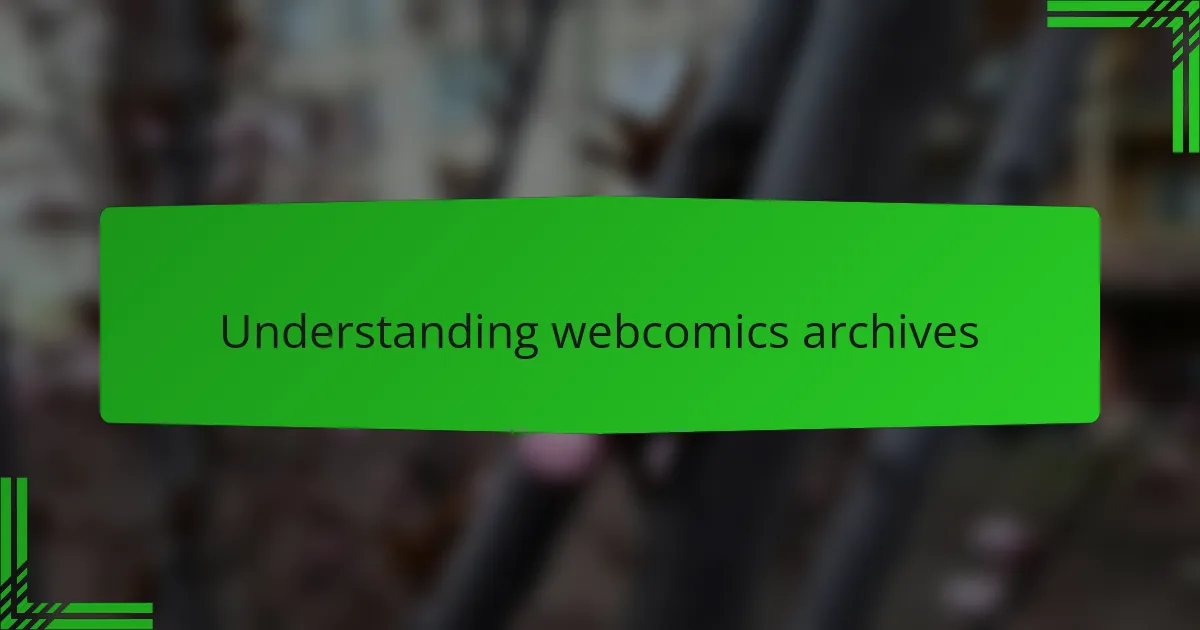
Understanding Webcomics Archives
Webcomics archives serve as invaluable resources for both creators and fans. I’ve often found myself diving into these archives, discovering hidden gems that I might have overlooked otherwise. It’s like stumbling upon a treasure chest of creativity, where each comic tells a unique story and reflects the passion of its creator.
From my experience, maintaining organized comic asset files not only eases the creative process but also ensures that I can share my work effectively. Here are some key elements to consider:
- Version Control: Keep track of different versions of your comics to prevent confusion.
- File Naming Conventions: Use consistent naming for easy identification and retrieval.
- Categorization: Organize your comics by genre or theme to streamline the archiving process.
- Backup Systems: Regularly back up your files to avoid loss from unexpected device failures.
- Metadata Inclusion: Add tags or descriptions to your files for better searchability in your archive.
These strategies have truly transformed how I manage my comic files, making the process feel less daunting and more enjoyable.
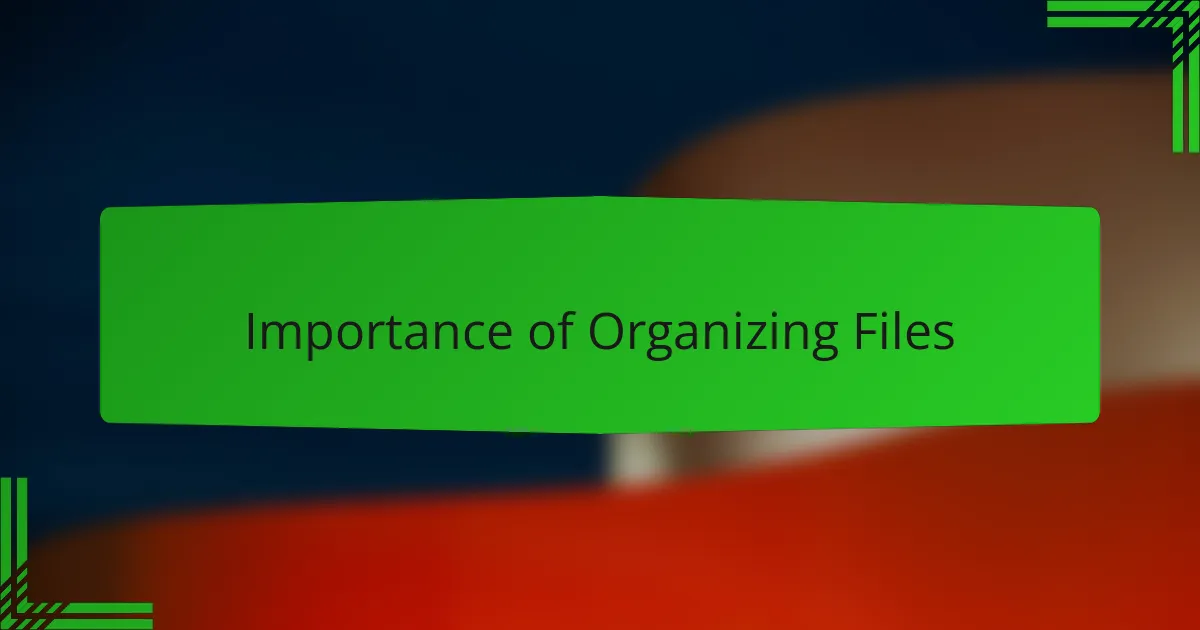
Importance of Organizing Files
When I first started organizing my comic asset files, I quickly realized how chaotic it could become. I remember sifting through a mountain of disorganized images and script files, each one a potential masterpiece, yet easily lost in the digital clutter. It became clear to me that a well-structured system not only saves time but also sparks creativity, allowing me to focus on storytelling instead of searching for assets.
I often find that having a consistent file naming convention has been a game changer. By simply adhering to a personal guideline, I can identify files at a glance. For instance, I use dates and project names in my filenames, which makes it incredibly easy to retrieve any specific comic, even years later. It might sound trivial, but those small decisions have significantly reduced my stress levels.
The inclusion of metadata has opened up a new world for me. Imagine being able to search for a comic just by remembering a character or theme, without combing through endless folders. This has not only made archival access straightforward but has also added a layer of depth to my creative process. I can’t help but wonder—if I hadn’t organized my files, how many great ideas might I have lost in the chaos?

Tools for Managing Comic Assets
When it comes to tools for managing comic assets, I’ve found that a solid file management software makes all the difference. I personally rely on cloud-based platforms like Google Drive and Dropbox. These not only offer ample storage, but they also allow me to access my files from anywhere. Can you imagine needing an asset during a coffee shop brainstorming session and having it just a click away?
Digital drawing software, such as Clip Studio Paint or Adobe Photoshop, often comes equipped with organization features that are a lifesaver. I appreciate how they let me tag and categorize layers within a single project. It helps to think of these layers like chapters in a book, where knowing the exact location of each is crucial for maintaining the story’s flow. Have you ever struggled to find the right layer mid-drawing? It can be pretty frustrating!
Lastly, I can’t emphasize enough how effective project management tools like Trello or Asana have been in keeping my editorial tasks organized. They allow me to visualize my workflow, set deadlines, and maintain a checklist for each comic project. I’ve noticed that reducing mental clutter helps me stay creative and focused, not just on managing assets but in crafting engaging narratives. What tools have made your creative process smoother?
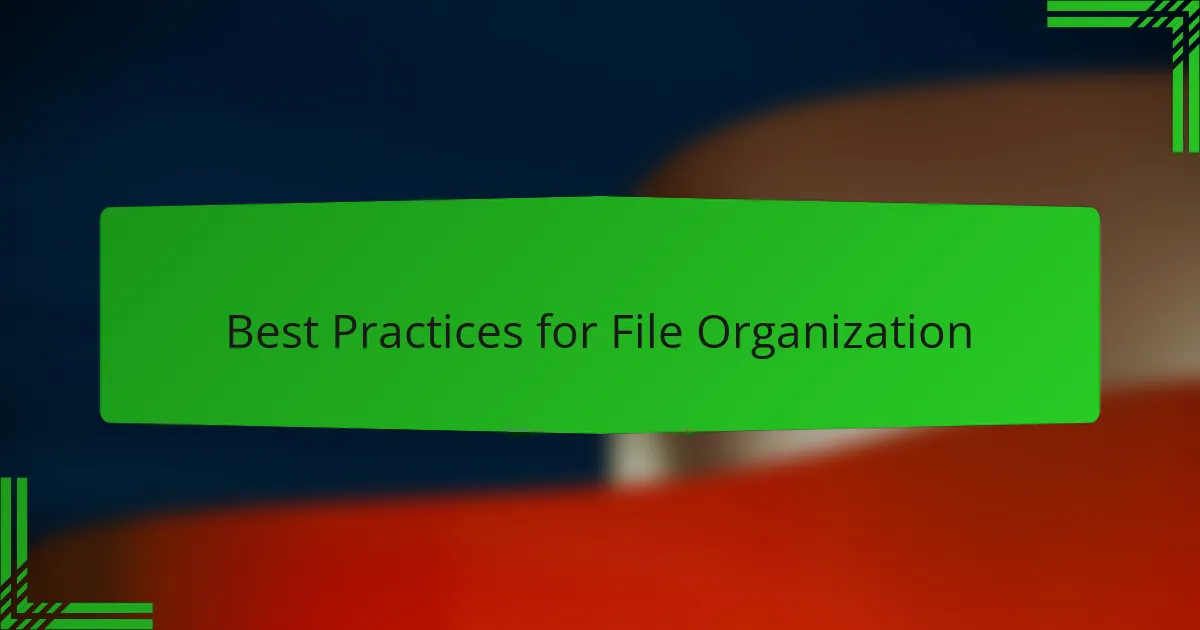
Best Practices for File Organization
Organizing comic asset files can feel overwhelming at first, but I’ve discovered that establishing a clear system is essential. One practice I swear by is creating distinct folders for each project. For example, I have a main folder for ongoing series, which contains subfolders for scripts, artwork, and promotional materials. This setup not only keeps my files sorted but also gives me a sense of accomplishment as I see each project develop.
I find that regularly reviewing and updating my file organization helps keep things fresh. Just last month, I took a couple of hours to clean up old projects that were no longer active. This not only cleared digital clutter but also reignited my passion for my current work. Have you ever noticed how much lighter you feel after decluttering? It’s a small but impactful way to stay motivated.
Incorporating version control has also been a lifesaver. I remember once losing a scene because I couldn’t find the right draft amid several iterations. Now, I include version numbers and dates in my file names, which makes tracking changes straightforward. It’s moments like these that remind me that a little organization goes a long way, particularly in creative endeavors where inspiration strikes at any moment.
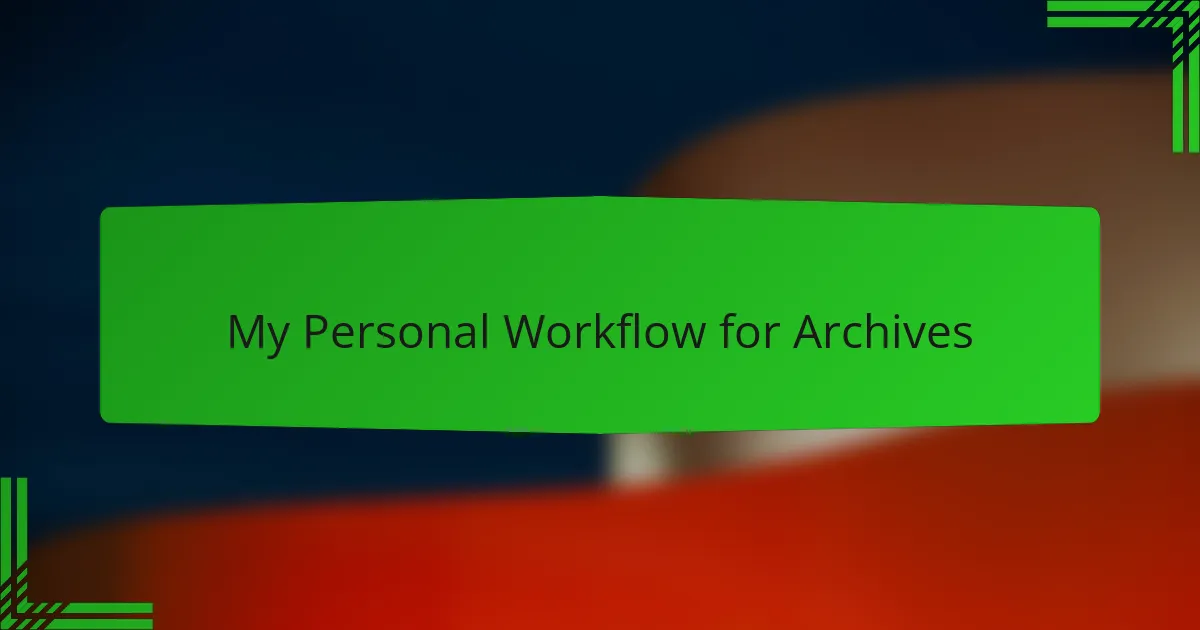
My Personal Workflow for Archives
When I think about my personal workflow for organizing comic archives, the first thing that comes to mind is consistency. I’ve developed a routine where every time I finish a comic, I immediately categorize and label the files. It might seem like a hassle in the moment, but I can’t express how rewarding it is when I’m working on my next project and need to access previous assets swiftly. Have you ever experienced the magic of instantly locating an old sketch that fits perfectly into a new idea? It feels like rediscovering an old friend.
One strategy that’s been a game changer for me is setting aside time weekly to review my archives. Just last weekend, I dedicated a couple of hours to assessing my file organization. To my surprise, I stumbled upon a half-finished comic that I’d completely forgotten about. It was like finding buried treasure! This habit not only helps keep my files organized but often sparks new creative ideas. Does anyone else find inspiration in unexpected places?
Additionally, I always remind myself that backup is a non-negotiable part of my workflow. I remember several years ago when I lost an entire project due to a hard drive failure; it was gut-wrenching. Since then, I’ve embraced a robust backup routine, using both cloud storage and external drives. I often ask, how valuable are our creative works if they can vanish in an instant? It’s those moments that drive me to be proactive, ensuring I never have to relive that heartache.
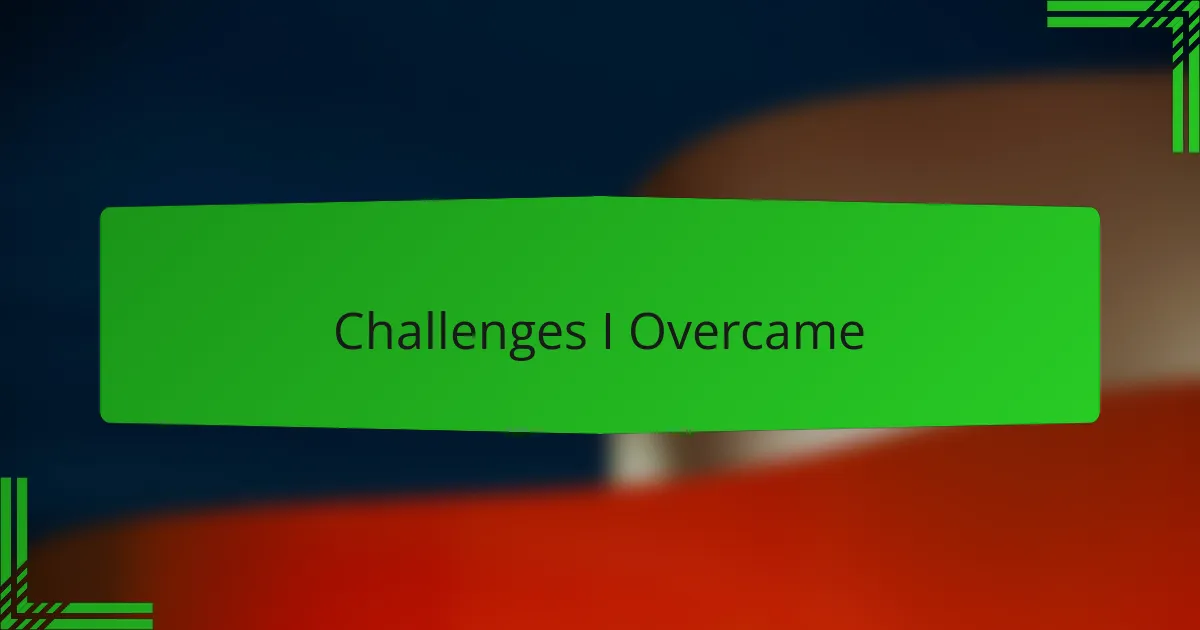
Challenges I Overcame
When I first started managing my comic asset files, I faced a significant challenge with version control. I remember feeling overwhelmed as I sifted through countless drafts, each labeled with generic terms like “Final” or “Revised.” It was a nightmare! There were times when I had no idea which version was the most current. That frustration sparked the idea to implement a simple yet effective system, incorporating clear labels with dates and version numbers. Now, I can easily navigate my work without second-guessing myself.
A particularly daunting moment for me was when a sudden computer crash wiped out a month’s worth of work. I felt a sinking feeling in my stomach as I recalled how confidently I had put off backing up files. This experience taught me the importance of having reliable backup systems in place. I now utilize both cloud storage and external hard drives, along with a schedule for regular backups, which has eased my anxiety and allowed me to focus on creating rather than worrying about losing my work.
The process of organizing my files wasn’t without its emotional hurdles either. I often found myself nostalgic while sorting through old sketches and scripts from past projects. It was bittersweet; some pieces reminded me of how far I’ve come, while others sparked the “what if” scenarios of unfinished stories. Embracing this sentiment, I now set aside a little time during my archiving sessions to revisit those memories, and occasionally, they inspire me to breathe new life into abandoned ideas. Have you ever noticed how looking back can ignite new creativity?
